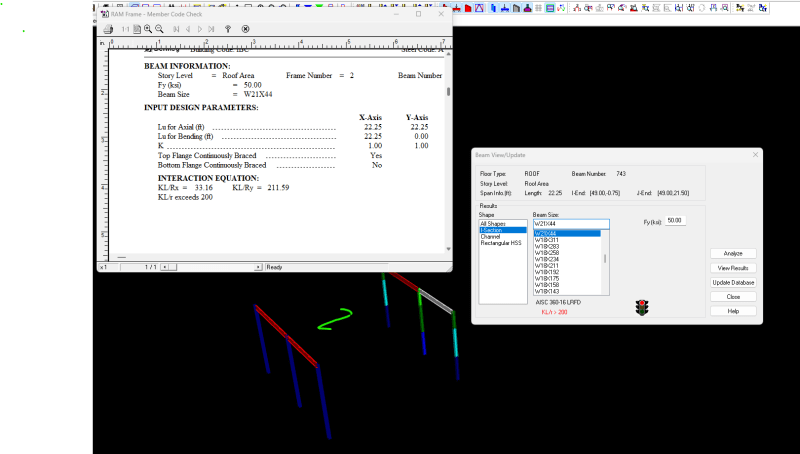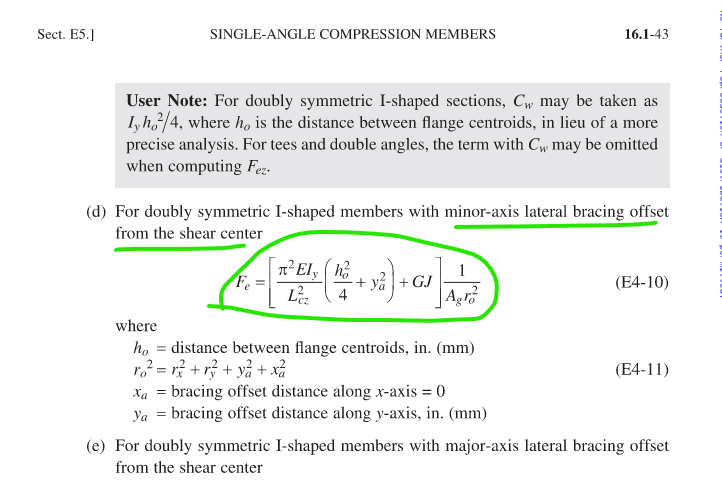Samwise Gamgee
Structural
I have a moment frames which will cause axial load in the beams. The software flags that KL/r > 200 (for weak axis buckling).
Question : As deck is perpendicular to the beam, can we consider the deck would brace the beam in Y-axis and effective length in Y-direction won't be the full length of the beam ? My plan was to use the flexural torsional buckling check (E4.d and calculate the critical buckling stress for lateral bracing offset from shear center). Check what is the equivalent length to achieve this and use that as the effective length in Y-direction. Is that reasonable ?


Question : As deck is perpendicular to the beam, can we consider the deck would brace the beam in Y-axis and effective length in Y-direction won't be the full length of the beam ? My plan was to use the flexural torsional buckling check (E4.d and calculate the critical buckling stress for lateral bracing offset from shear center). Check what is the equivalent length to achieve this and use that as the effective length in Y-direction. Is that reasonable ?


